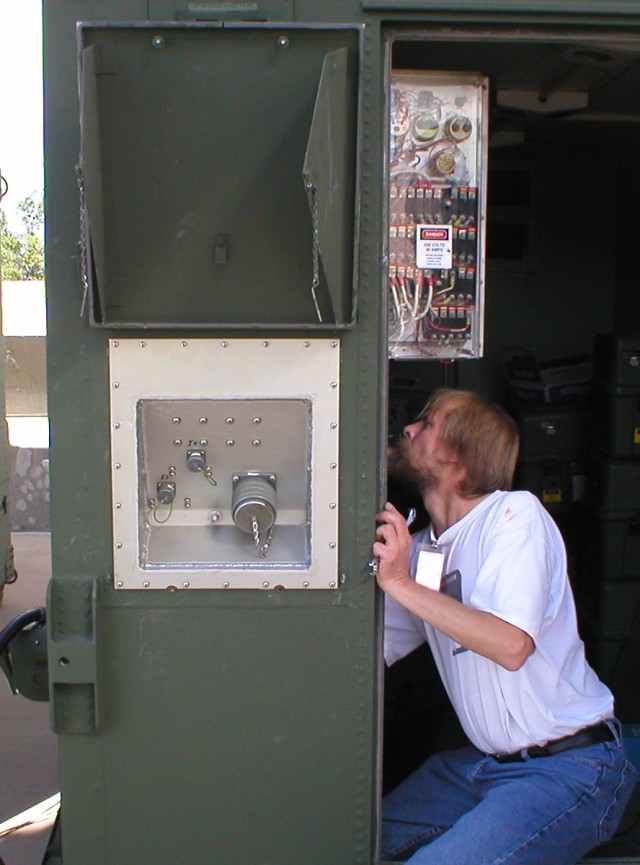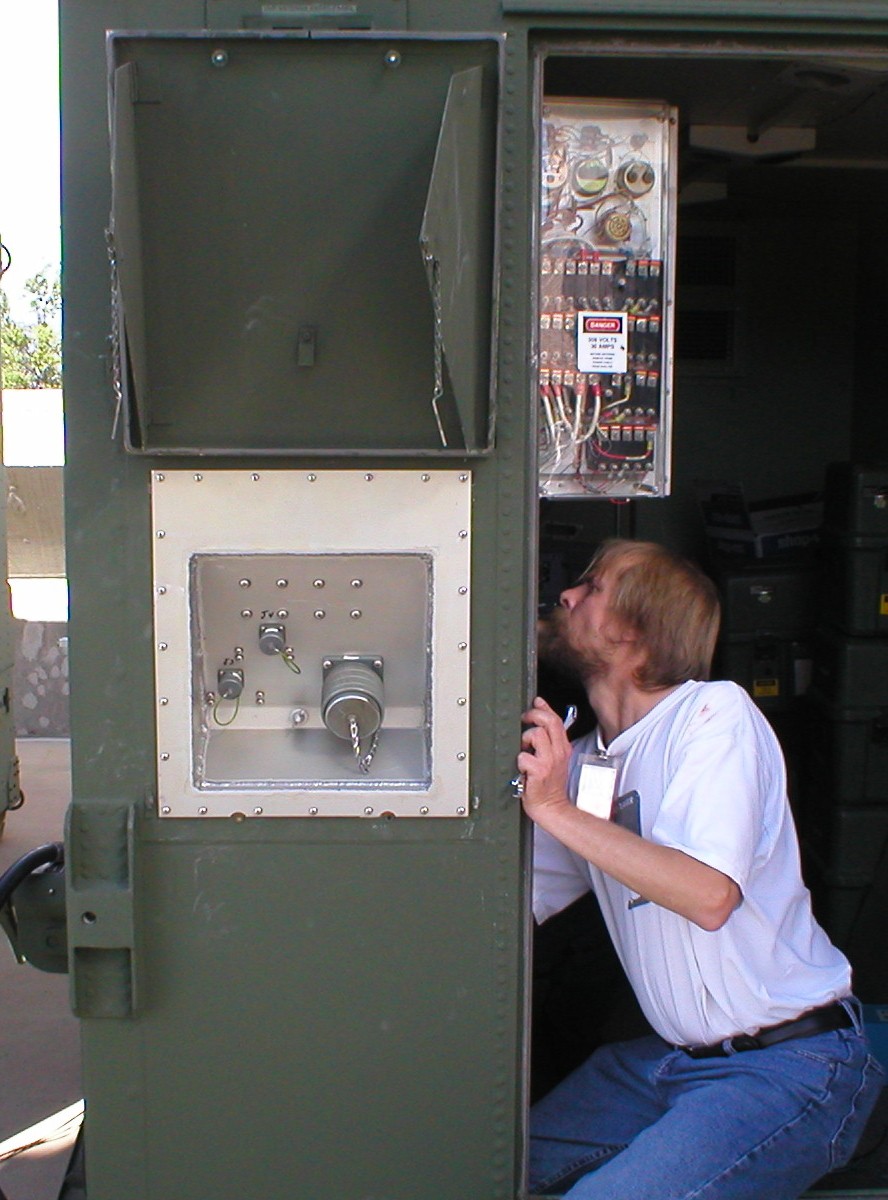TOBYHANNA ARMY DEPOT, Pa. - The Air Force isn't waiting for lighting to strike twice. After strikes shut down key Milstar satellite communications systems, they called Tobyhanna for help.
Milstar, an advanced military communications satellite system, is a joint-service satellite communications system that provides secure, jam resistant, worldwide communications. The multi-satellite constellation links command authorities with a wide variety of resources, including ships, submarines, aircraft and ground stations.
The AN/TRC-194 is the Air Force's Milstar Ground Command Post. They are fixed systems, rather than mobile, and located worldwide.
"About two years ago, a couple of HEMP (High Altitude Electromagnetic Pulse)-proof terminals of the TRC-194 were hit by lightning at Peterson Air Force Base (Colorado)," says Jack Pallien, an electronics technician in Production Engineering Directorate's Engineering Design, Development and Manufacturing Division. "They were designed to withstand a HEMP blast from a nuclear weapon, lightning should not be a problem."
Peterson is the headquarters for the AN/TRC-194 program. The Air Force hired a contractor to fix the problem, but the solution was very expensive, so they asked Tobyhanna, where AN/TRC-194s are overhauled, to take a look.
The contractor wanted to install new heavy power filters, which meant that the power entry boxes would have to be replaced with sturdier boxes to support the added weight.
They also wanted to add new electronics that are more resistant to lightning strikes.
"We found that we could install mechanical trusses to support the added weight from the floor instead of from the box, so there was no need for a heavier box and no need for new electronics, or new manuals and paperwork," Pallien said. "The box only needed to be reinforced to take the weight of better EMI (electromagnetic interference) HEMP filters that would be more resistant to lightning strikes. The filters dissipate a strike's energy."
In dissipating a lightning strike, the filters would be ruined, but are easily removed and replaced.
Dave Godumski, an engineering technician, noted that the depot's solution reduced downtime over the contractor's solution by at least five days. "There was also a significant cost savings," he said. "But we haven't done a cost analysis yet to get an exact figure. We'll modify at least 10 systems that are located worldwide."
The material is being fabricated now and modifications will start at Peterson Air Force Base in the near future.
"We brought back some parts of their spare TRC-194 system to build a mock up here so we can make sure our parts fit correctly and test everything before installations begin," Godumski said.
Tobyhanna Army Depot is the largest full-service Command, Control, Communications, Computers, Intelligence, Surveillance, and Reconnaissance maintenance and logistics support facility in the Department of Defense. Employees repair, overhaul and fabricate electronics systems and components, from tactical field radios to the ground terminals for the defense satellite communications network.
Tobyhanna's missions support all branches of the Armed Forces. The depot is the Army Center of Industrial and Technical Excellence for Communications-Electronics, Avionics, and Missile Guidance and Control Systems and the Air Force Technology Repair Center for ground communications and electronics.
About 5,700 personnel are employed at Tobyhanna, which is located in the Pocono Mountains of northeastern Pennsylvania.
Tobyhanna Army Depot is part of the U.S. Army CECOM Life Cycle Management Command. Headquartered at Fort Monmouth, N.J., the command's mission is to research, develop, acquire, field and sustain communications, command, control, computer, intelligence, electronic warfare and sensors capabilities for the Armed Forces.


Social Sharing